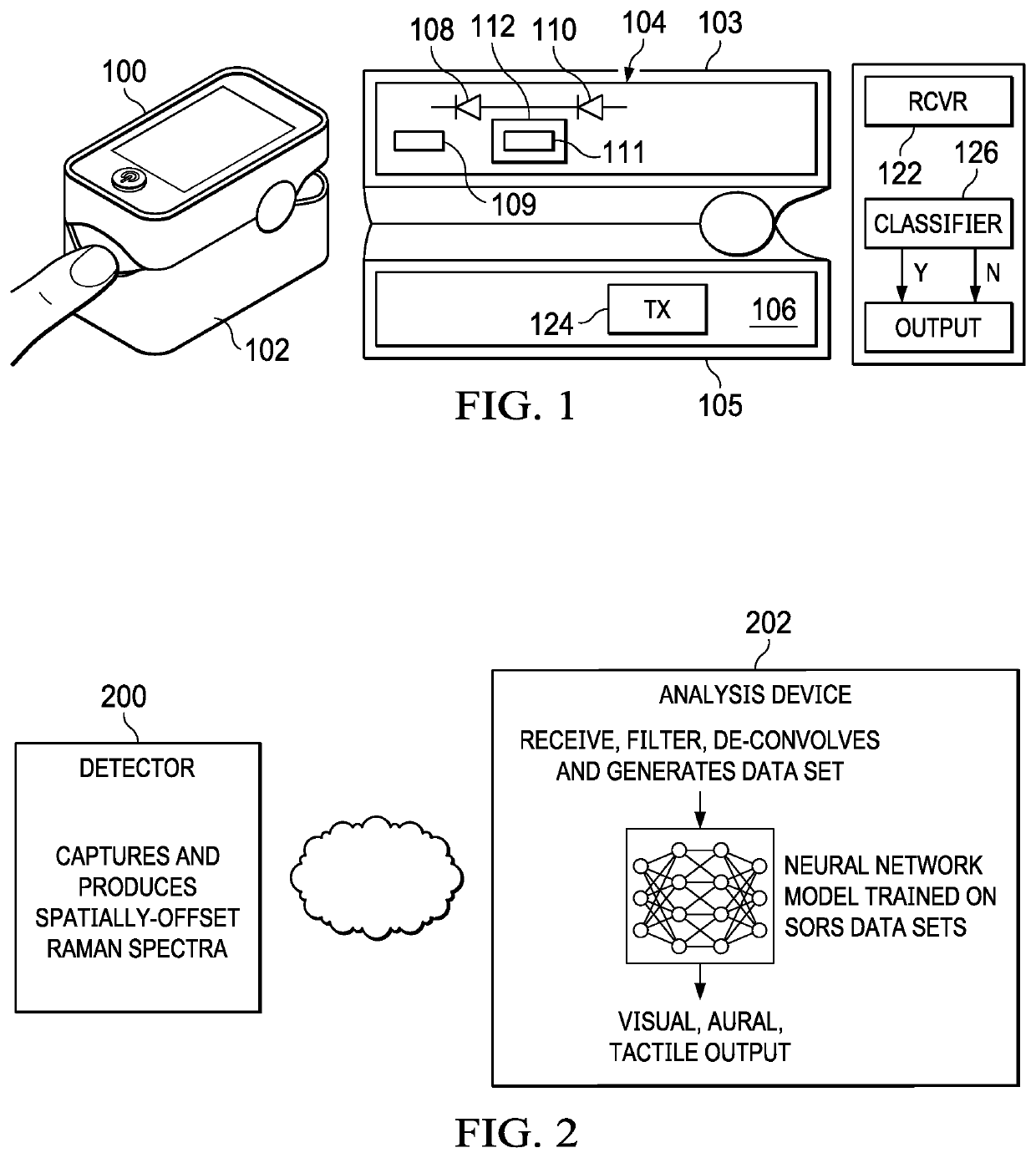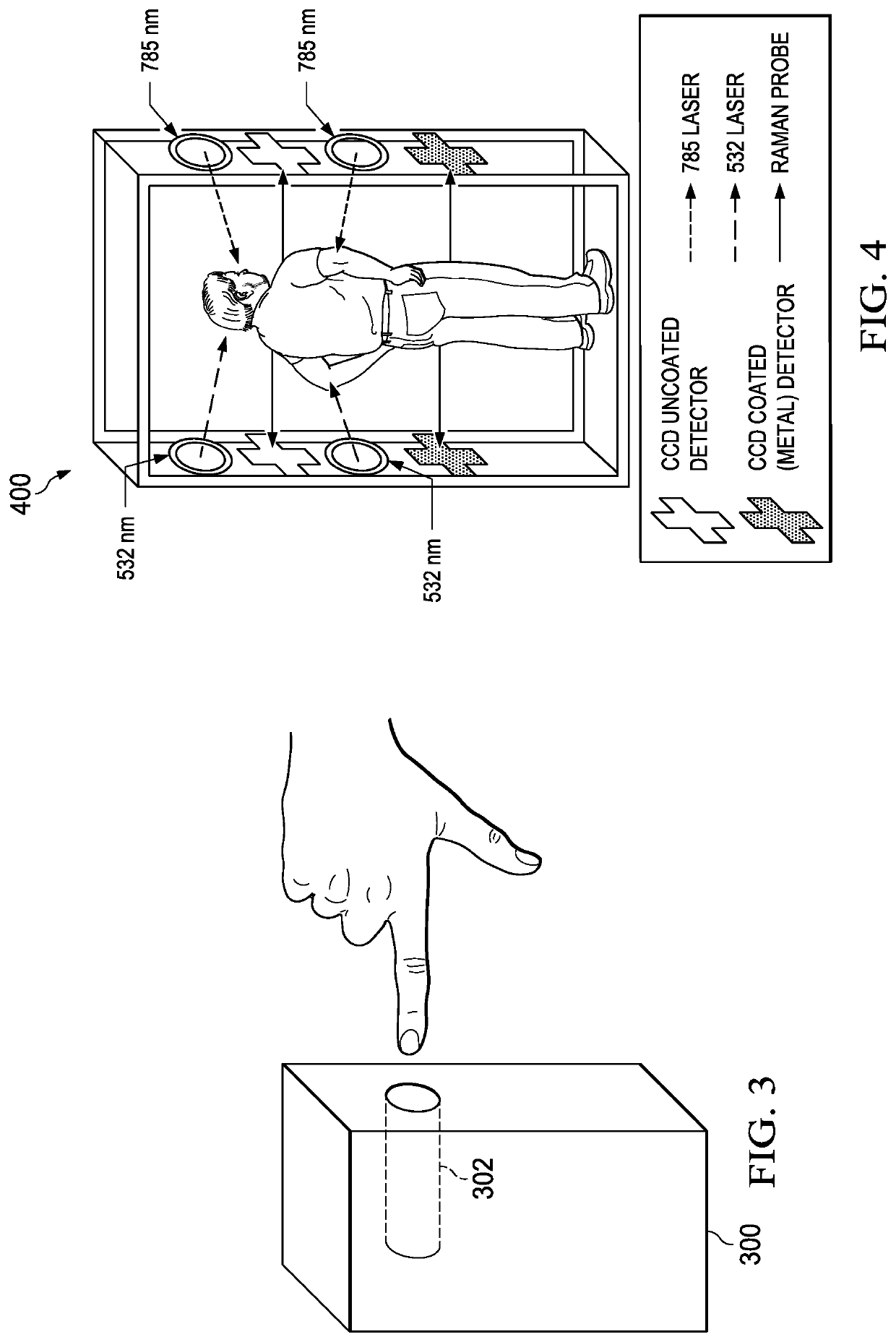Self-administered, non-invasive, transcutaneous viral detector
a transcutaneous, non-invasive technology, applied in the field of self-administered, non-invasive, transcutaneous viral detectors, can solve the problems of contact tracing and even diagnosis, which do not provide personal diagnosis, let alone in real-time or near-real-time, and can not be used in diagnostics,
- Summary
- Abstract
- Description
- Claims
- Application Information
AI Technical Summary
Problems solved by technology
Method used
Image
Examples
Embodiment Construction
[0012]In one embodiment, and with reference to FIG. 1, a device 100 comprises a housing 102 that supports a pair of pads, namely, a first (upper) portion 103 comprising a silica pad 104, and an opposed second (lower) portion 105 comprising a silica pad 106. The pads are optional. The housing 102 supports the first and second portions in opposed relation to one another, and in this embodiment the housing is configured to be positioned around a patient's tissue of interest, e.g., a fingertip, at which the viral measurement is being carried out. The positioning itself is not critical as long as the device is positioned relative to the vascularized tissue of interest, and in this embodiment the device is configured to be self-positioned. As depicted, the device 100 comprises a number of light sources. In a preferred embodiment, pad 104 supports emitters (e.g., LEDs) 108 and 110 that are positioned closely adjacent one another and configured to be excited at a first wavelength, e.g., 785...
PUM
 Login to View More
Login to View More Abstract
Description
Claims
Application Information
 Login to View More
Login to View More - R&D
- Intellectual Property
- Life Sciences
- Materials
- Tech Scout
- Unparalleled Data Quality
- Higher Quality Content
- 60% Fewer Hallucinations
Browse by: Latest US Patents, China's latest patents, Technical Efficacy Thesaurus, Application Domain, Technology Topic, Popular Technical Reports.
© 2025 PatSnap. All rights reserved.Legal|Privacy policy|Modern Slavery Act Transparency Statement|Sitemap|About US| Contact US: help@patsnap.com


